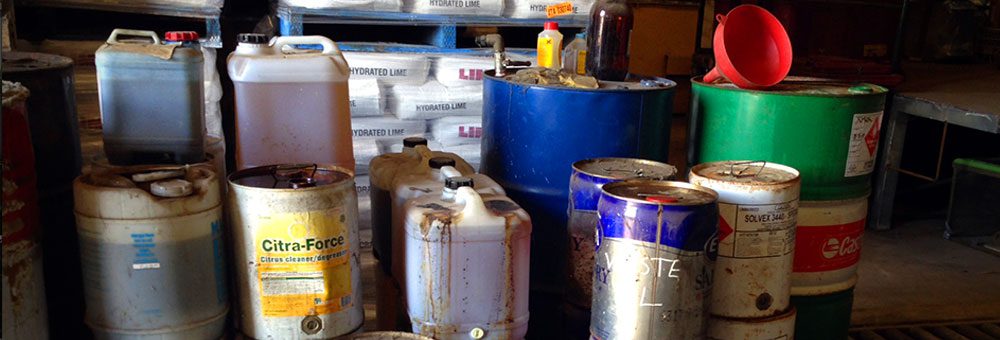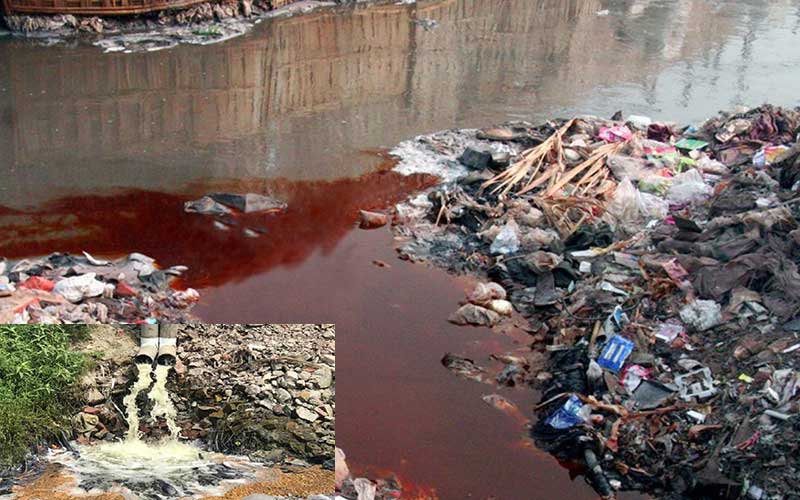Innovative Industrial Wastewater Treatment Solutions: Safeguarding the Environment
Innovative Industrial Wastewater Treatment Solutions: Safeguarding the Environment
Blog Article
How Liquid Waste Disposal Works: A Thorough Overview of Methods and Technologies Used

Overview of Fluid Waste Types
The complexity of liquid waste types demands a complete understanding of their features and implications for disposal. Fluid waste can extensively be classified right into several types, consisting of industrial, metropolitan, agricultural, and contaminated materials. Each category displays distinctive homes, calling for certain administration approaches to reduce ecological and health and wellness threats.
Industrial liquid waste originates from producing processes and typically contains a series of impurities, such as heavy metals, solvents, and organic compounds. Metropolitan liquid waste, mostly making up wastewater from families and business facilities, has raw material, nutrients, and virus (industrial wastewater treatment). Agricultural liquid waste, including drainage from ranches, may contain fertilizers, pesticides, and pet waste, positioning threats to water top quality and ecosystems
Harmful fluid waste is characterized by its toxicity, reactivity, or potential to trigger harm. This classification consists of compounds like acids, bases, and certain chemicals that require rigid handling and disposal protocols. Recognizing these varied liquid waste types is crucial for establishing effective disposal approaches and making sure compliance with environmental guidelines. Proper category and characterization are necessary for carrying out proper treatment strategies and decreasing the adverse effect on public health and wellness and the environment.
Physical Therapy Techniques

Screening is the preliminary step, where larger fragments and debris are gotten rid of from the liquid waste making use of displays or grates. In sedimentation containers, much heavier particles clear up at the base, developing a sludge layer, while the clarified fluid can be more treated.
Purification is another important technique that involves passing the liquid via permeable materials, such as sand or membranes, to catch smaller fragments. This step boosts the top quality of the fluid, making it ideal for succeeding therapy processes.

Chemical Treatment Techniques
Chemical therapy methods are necessary for properly handling liquid waste, particularly in resolving dissolved and colloidal pollutants that physical methods might not properly get rid of. These methods utilize various chemical agents to counteract, precipitate, or change unsafe compounds right into much less harmful forms.
One usual technique is coagulation and flocculation, where chemicals such as alum or ferric chloride are contributed to advertise the gathering of put on hold bits. This procedure improves sedimentation, permitting much easier removal of the resulting sludge. Furthermore, oxidation processes, using agents like chlorine or ozone, are liquid waste disposal employed to break down complex natural substances and pathogens, making the waste much safer for discharge or more therapy.
Neutralization is an additional vital strategy, which readjusts the pH of acidic or alkaline waste streams to neutral degrees, protecting against potential harm to downstream systems and the setting. Furthermore, advanced oxidation procedures (AOPs) use combinations of oxidants and ultraviolet light to deteriorate persistent toxins, accomplishing a higher degree of treatment effectiveness.
Biological Therapy Processes
Biological treatment processes play an important role in the management of liquid waste by utilizing microorganisms to decay raw material and reduce pollutant levels. These processes can be generally classified into anaerobic and cardiovascular treatments, each utilizing specific microbial neighborhoods to achieve effective waste destruction.
Aerobic therapy entails using oxygen to facilitate the breakdown of natural materials by microorganisms. This procedure is typically executed in activated sludge systems, where aeration tanks supply a helpful atmosphere for microbial development, causing the oxidation of organic contaminants. The resultant biomass can be divided from treated effluent via sedimentation.
In contrast, anaerobic therapy occurs in the lack of oxygen, relying upon different bacteria to break down organic issue. This method is specifically beneficial for high-strength waste, as it produces biogas, a sustainable energy resource, while decreasing sludge production. Technologies such as anaerobic digesters are regularly utilized in commercial and metropolitan applications.
Both anaerobic and cardiovascular organic treatments not only minimize the ecological impact of liquid waste but also assist in resource recovery, making them vital components of lasting waste management techniques. Their performance, efficiency, and adaptability support their widespread application across numerous fields.
Arising Technologies in Disposal
Cutting-edge methods to liquid garbage disposal are rapidly evolving, driven by developments in technology and an increasing focus on sustainability. Among these arising innovations, membrane layer bioreactors (MBRs) have obtained traction for their ability to integrate organic therapy with membrane layer purification, causing premium effluent that can be recycled in various applications. MBRs make it possible for smaller sized impacts and more reliable operations contrasted to typical systems.
An additional encouraging growth is the use of anaerobic digestion integrated with nutrient healing innovations, which not only treats liquid waste however likewise generates biogas and recuperates useful nutrients like nitrogen and phosphorus. This twin advantage boosts source efficiency and decreases environmental impact.
Additionally, advanced oxidation processes (AOPs) are being embraced for the deterioration of intricate natural toxins. These techniques utilize powerful oxidants and catalysts to break down contaminants at the molecular degree, providing a very effective solution for challenging waste streams.
Furthermore, the assimilation of expert system and artificial intelligence in waste monitoring systems is enhancing functional efficiency and predictive maintenance, leading to reduced prices and improved ecological compliance. These modern technologies show a considerable shift towards even more lasting and reliable liquid waste disposal practices.
Verdict
In conclusion, reliable liquid waste disposal necessitates an extensive understanding of different methods and modern technologies. By constantly advancing these methodologies, it ends up being possible to address the expanding difficulties linked with liquid waste, eventually contributing to environmental defense and source healing.
Liquid waste disposal is a crucial facet of ecological management, requiring a comprehensive understanding of numerous strategies and technologies customized to different waste kinds. Liquid waste can generally be categorized into a number of kinds, consisting of industrial, municipal, agricultural, and hazardous waste. Agricultural liquid waste, including overflow from ranches, may contain plant foods, chemicals, and animal waste, posing dangers to water high quality and communities.
Numerous physical therapy methods play a crucial function in handling liquid waste properly - industrial wastewater treatment.In final thought, effective liquid waste disposal necessitates a detailed understanding of various methods and modern technologies
Report this page